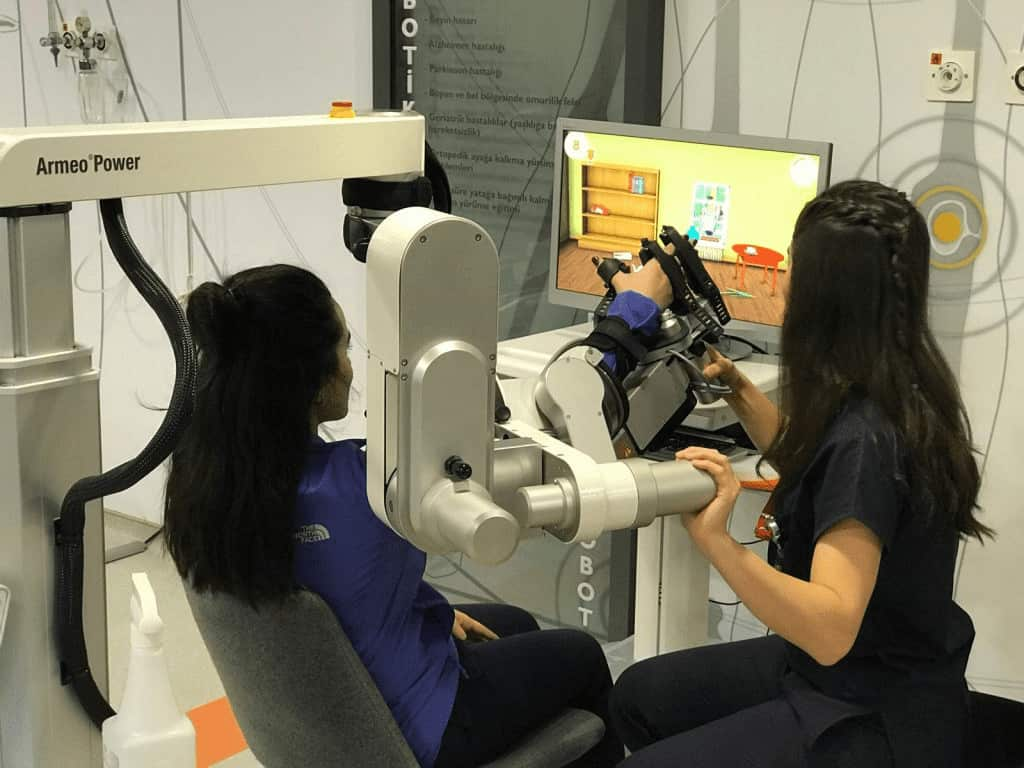Experiencing a stroke can be a life-altering event, not just for the individual but also for their loved ones. The journey to recovery often involves various forms of rehabilitation, with physical therapy playing a crucial role. Physical therapy for stroke patients aims to help them regain their strength, mobility, and independence. At our clinic, we specialize in innovative techniques, including robotic physical therapy, to provide the best possible outcomes for our patients. In this article, we’ll explore the importance and benefits of physical therapy after a stroke, offering insights into what you can expect during the recovery process.
Is Physical Therapy Successful After a Stroke?
Physical therapy is widely regarded as one of the most effective treatments for stroke patients. Success rates are high, particularly when therapy begins early and is tailored to the individual’s specific needs. The primary goal of physical therapy for stroke patients is to enhance their ability to perform daily activities independently. This involves improving motor skills, balance, and coordination, which are often affected by a stroke.
Studies have shown that stroke physical therapy can lead to significant improvements in mobility and function. Techniques such as strength training, balance exercises, and gait training are commonly used to help patients regain their abilities. The success of these interventions depends on various factors, including the severity of the stroke, the patient’s overall health, and their commitment to the rehabilitation process. Our clinic’s advanced approach, particularly through robotic physical therapy, has shown remarkable results in helping stroke patients achieve their recovery goals.
Early Treatment Process for Stroke Treatment
The early stages of stroke treatment are critical for recovery. Physical therapy typically begins within the first 24 to 48 hours after a stroke, once the patient is medically stable. Early intervention focuses on preventing complications such as muscle atrophy and joint stiffness, which can hinder recovery. During this initial phase, therapists work on passive range-of-motion exercises and gentle movements to stimulate the muscles and joints.
When Do Physical Therapy Applications Begin After a Stroke?

Physical therapy for stroke patients typically begins within 24 to 48 hours after the stroke occurs, provided the patient’s condition is stable. Starting early is crucial because it helps prevent complications such as muscle atrophy, joint stiffness, and pressure sores.
Initially, the therapy might seem very basic. Therapists often begin with passive range-of-motion exercises, where they move the patient’s limbs to maintain flexibility and prevent stiffness. This phase also includes gentle positioning techniques to promote proper posture and reduce the risk of pressure sores. Early mobilization can involve simple tasks like sitting up in bed, dangling legs off the side of the bed, or standing with assistance.
As the patient starts to stabilize and show signs of improvement, the physical therapy regimen becomes more intensive. This progression includes more active exercises that the patient performs with minimal assistance. These exercises are designed to gradually increase strength, improve balance, and enhance overall coordination. The ultimate goal is to get the patient moving as independently as possible, as early movement is associated with better long-term outcomes.
The early days of physical therapy can be challenging and may require a great deal of patience and perseverance from both the patient and their support system. However, starting physical therapy soon after a stroke can lay a strong foundation for recovery and significantly improve the chances of regaining lost functions.
Things to Consider When Choosing a Physical Therapy Center After a Stroke
Choosing the right physical therapy center is a critical decision that can significantly impact the recovery journey. Here are some important factors to consider when making your choice:
- Neurorehabilitation Expertise:
Opt for a center that specializes in neurorehabilitation. These centers have the expertise and experience to address the unique challenges posed by neurological conditions like stroke. Neurorehabilitation focuses on retraining the brain and body to regain lost functions, making it essential for effective stroke recovery.
- Robotic Rehabilitation:
Advanced centers often incorporate robotic rehabilitation technology. These innovative devices provide precise, repetitive movements that are crucial for retraining the brain and muscles. Robotic therapy can enhance the intensity and consistency of rehabilitation, leading to better outcomes. It’s worth considering centers that offer such cutting-edge technology as part of their treatment protocols.
- Experienced Staff:
The quality of the staff is a decisive factor. Look for centers with therapists who have extensive experience in stroke rehabilitation. Experienced therapists can tailor treatment plans to the individual needs of each patient, ensuring a more effective and personalized approach to recovery.
- Customized Treatment Plans:
Every stroke patient is unique, and so are their rehabilitation needs. A good physical therapy center will provide individualized treatment plans that cater to the specific requirements of each patient. These plans should be flexible and adaptable, with regular assessments and adjustments based on the patient’s progress.
- Comprehensive Services:
Stroke recovery often requires a multidisciplinary approach. Consider centers that offer a range of services, including occupational therapy, speech therapy, and psychological support. These additional therapies can address various aspects of recovery, from improving daily living skills and communication abilities to providing emotional support.
Choosing the right physical therapy center is not just about the immediate treatment but about setting the stage for a successful long-term recovery. Ensuring the center has the right expertise, technology, and comprehensive services will significantly enhance the chances of a positive outcome for the stroke patient.
How Long Do You Need Physical Therapy After a Stroke?

The length of physical therapy after a stroke can vary significantly from person to person. On average, most stroke survivors undergo therapy for several months, but in some cases, it can extend to a year or more. The key is consistent, tailored therapy to meet the patient’s evolving needs.
It’s important to remember that recovery is not always linear. Patients might experience plateaus where progress seems to slow down. This is normal and should not discourage continuation of therapy. Regular assessments by the therapist help in adjusting the treatment plan to keep it effective and challenging.
Physical Therapy Applications After a Stroke

Physical therapy for stroke patients encompasses a variety of techniques and applications designed to address the specific challenges each patient faces. Here are some of the most common methods used:
- Strength Training: Exercises aimed at rebuilding muscle strength, which is often lost after a stroke. This can include weight training, resistance band exercises, and body-weight exercises.
- Balance Training: Many stroke survivors struggle with balance issues. Therapists use specific exercises to improve balance and coordination, reducing the risk of falls.
- Gait Training: This focuses on helping patients relearn how to walk. It often involves the use of assistive devices like walkers or canes, and advanced centers may use robotic aids to provide precise and repetitive movement training.
- Functional Mobility Training: These exercises are designed to improve the ability to perform everyday activities, such as getting in and out of bed, standing up from a chair, or using the bathroom independently.
- Coordination Exercises: Techniques that help improve the fine motor skills needed for daily tasks, such as writing, buttoning a shirt, or handling utensils.
At Engin Çakar’s Clinic, we utilize state-of-the-art robotic rehabilitation technology, which has been shown to significantly enhance recovery outcomes. This advanced technology allows for precise and repetitive movements that are crucial in the early stages of recovery, helping to accelerate the rehabilitation process and improve overall results.
The Chance of Stroke Patients Walking Again is Quite High
With the right physical therapy, many stroke patients have a high chance of regaining their ability to walk. Early intervention, consistent therapy, and advanced techniques like robotic rehabilitation play a crucial role in improving mobility. Success depends on several factors, including the severity of the stroke, the patient’s overall health, and their commitment to the rehabilitation process. Encouragingly, many patients make significant strides in their recovery, regaining not only their mobility but also their confidence and independence.

